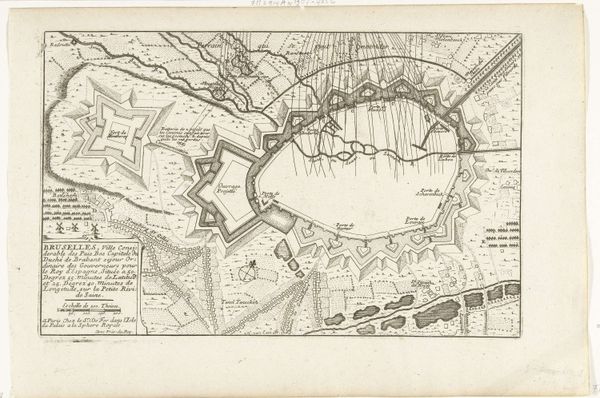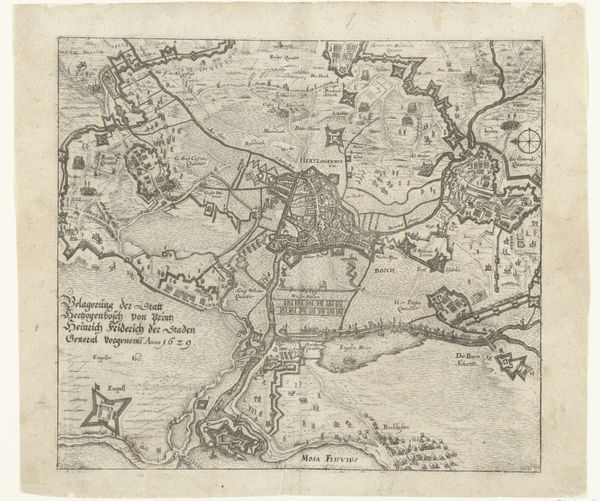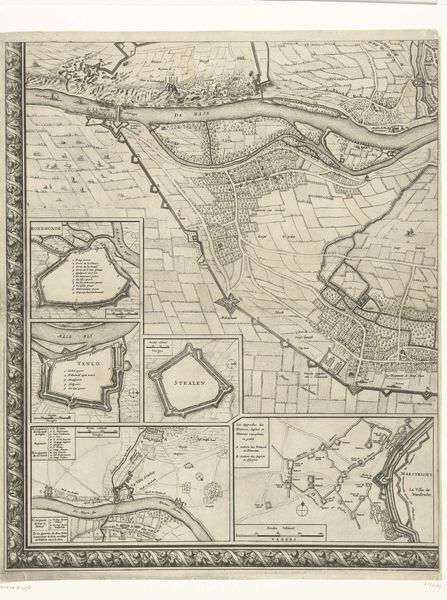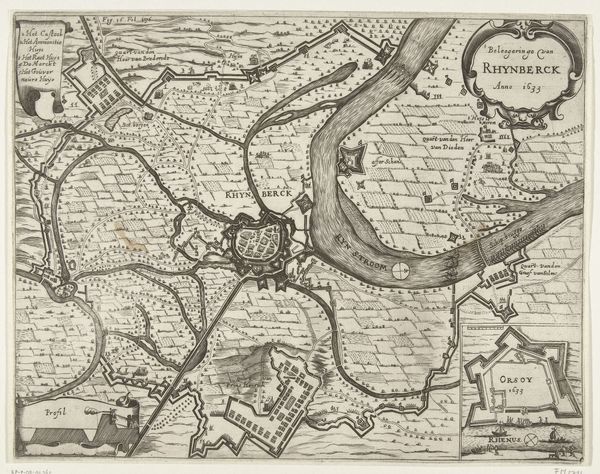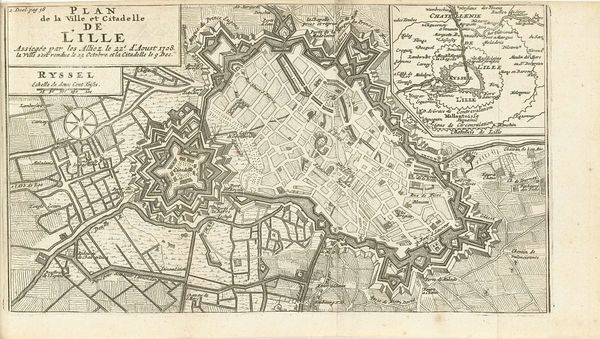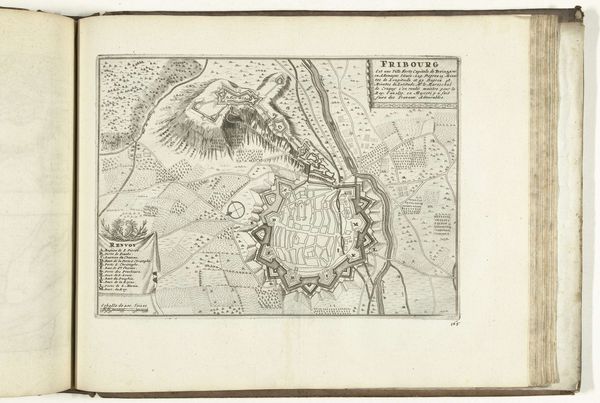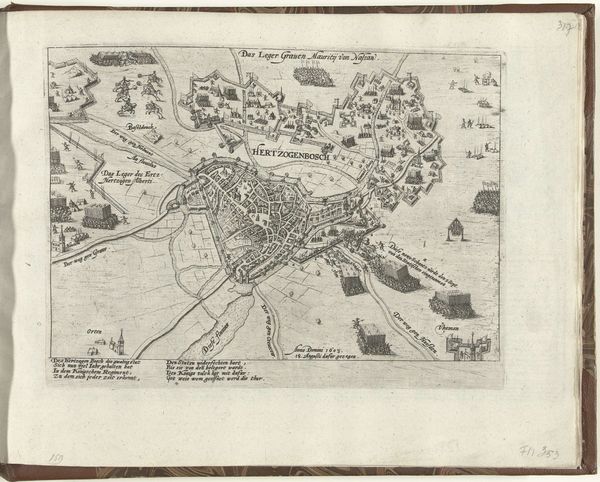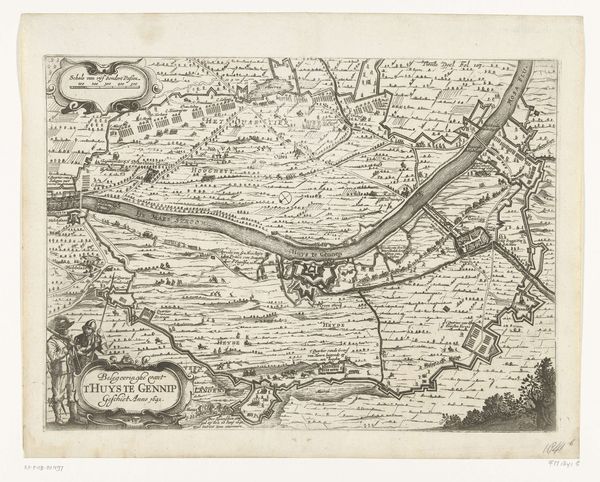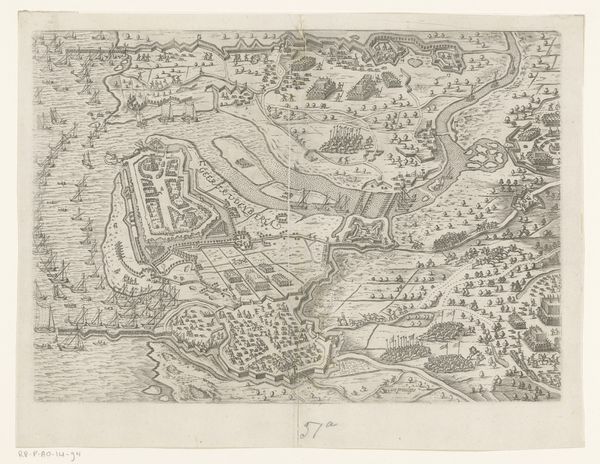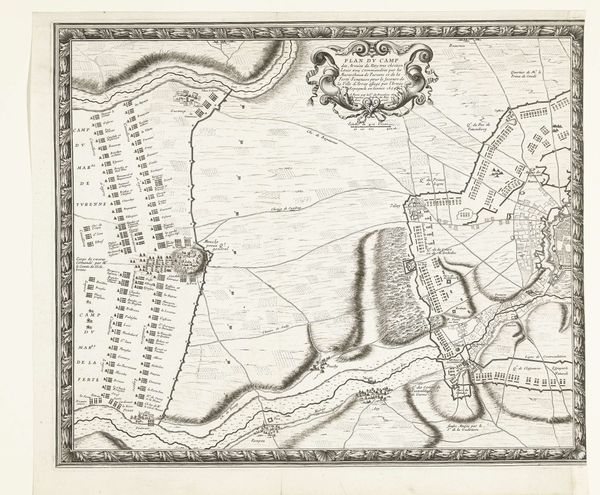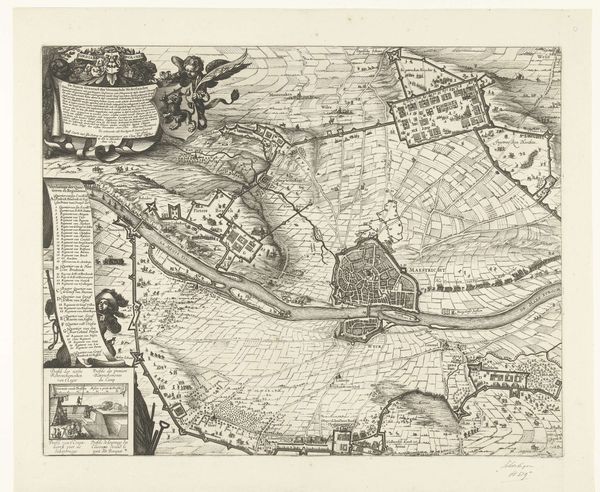
print, engraving
#
baroque
# print
#
cityscape
#
engraving
Dimensions: height 149 mm, width 196 mm
Copyright: Rijks Museum: Open Domain
Curator: Here we have "The Siege of Béthune, 1710," an engraving dating from around 1714-1716, created by Matthijs Pool and part of the Rijksmuseum's collection. It illustrates a bird's-eye view of the siege of the French city by Allied forces. Editor: My first impression is of precision and intense activity. The intricacy of the lines really emphasizes the labor involved in both the military action depicted and the production of the print itself. It’s a visual representation of concentrated power. Curator: Absolutely. I find it intriguing to consider this image within the context of the early 18th century's power dynamics. Béthune was a pivotal point of contention between France and the Dutch Republic, representing broader conflicts over land, resources, and political dominance. Editor: Right, and looking closely, you can see the distinct elements that would have been vital to siege warfare: fortifications, encampments, planned lines of approach. Pool details each aspect with apparent care. The print’s medium makes it easy to reproduce and disseminate widely. Curator: Indeed, and considering that this print was created several years after the actual siege, we must examine it as both a historical record and a tool of propaganda. Whose perspective does it promote, and what socio-political agendas does it serve through its depiction of this particular conflict? What are its implications within the power structure of its era? Editor: Precisely! How many prints like these were produced, disseminated, and then subsequently consumed? Because these aren't neutral records but rather crafted objects designed to support a particular version of events, likely catering to an elite, literate audience. Curator: The level of technical skill required to create this type of detailed engraving also raises questions about who had access to artistic training and production resources during that period. This isn't simply about capturing a moment; it is about solidifying a specific narrative within a complex tapestry of social and political forces. Editor: Looking at it through that lens, it's difficult not to appreciate the detailed skill but to simultaneously be reminded that art doesn’t exist in a vacuum, but rather through the lens of the artist and those who will see it. Thank you for enriching the interpretation of the artwork by shedding some much-needed context. Curator: And for highlighting its physicality and modes of production. Seeing them together certainly does add so much!
Comments
No comments
Be the first to comment and join the conversation on the ultimate creative platform.
